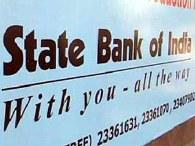 | « Back to article | Print this article |
Banks: Few takers for loans
 Unless loan growth picks up, net interest margins may not expand as expected, writes Shobhana Subramanian.
Unless loan growth picks up, net interest margins may not expand as expected, writes Shobhana Subramanian.
The BSE Bankex has outperformed the broader market by 40 per cent in the last seven months. Since March 2009, the index has gained 134 per cent and hit a 52-week high last week.
However, although the economy shows signs of recovering, banks aren't lending too much. Loan growth, as Citigroup points out, is at a seven-year low.As the brokerage explains, year-to-date loans are up just one per cent and it's not surprising that the incremental loan-deposit ratio is under 15 per cent.
Loan growth has been slowing over the past few months and is now growing at just over 14 per cent compared with 25 per cent a year ago.Companies' ability to access the capital market both at home and abroad seems to be part of the reason for lesser lending by banks. So those companies that were already over-leveraged made use of the opportunity to raise equity through Global Depository Receipts (GDRs) and Qualified Institutional Placements (QIPs).
Also, banks are not only lending less in a relatively low-inflation environment, they are lending at incrementally lower rates in a falling interest rate environment. This means that net interest margins (NIMs) could be lower even though the cost of funds is down and high-cost deposits are being re-priced.
So while the Street is pencilling in better NIMs for the next couple of quarters as the cost of deposits comes off, the lower-than-expected volumes may not allow that.
Citigroup observes that historically low loan-deposit ratios have seen a fall in NIMs. Loan growth should pick up in the next few months, but is expected to be around 15-16 per cent for 2009-10, which is below the expectations of 20 per cent.If that number is to be achieved then loan growth needs to be close to 50 per cent in the second half of the year which seems near impossible.
So while it's true that an improving macro-economic environment should mean money being disbursed by banks, the extent of the growth may be disappointing. Banks also face some amount of risk were interest rates to rise in a high liquidity situation.The Street is understandably factoring in more business as the economy recovers. As such, bank stocks are not cheap.
Axis Bank trades at 2.7 times estimated 2009-10 price to book value (P/BV), while ICICI Bank trades at just under 2 times. State Bank of India trades at 2 times P/BV, while Union Bank trades at 1.4 times. Although HDFC Bank is the most expensive of them all, trading at just under 4 times P/BV, it is the best in the business thanks to its clean balance sheet and strong corporate franchise.